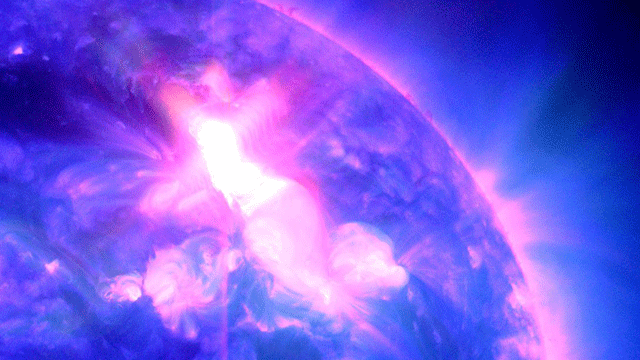
Let's see, what's the weather like right now (sticks finger into the air). Speed, 1.2 million miles per hour, density 1.1 protons per cubic centimeter, temperature 200,000 degrees Celsius. Sound a bit extreme? Surely climate change hasn't made things THAT batty. As a matter of fact, conditions have calmed down in the last several hours.
Okay, I'm not talking Earth weather—if I were, we'd all be dead, fast. I'm talking space weather, and a subsidence in its condition following a powerful solar flare whose ejecta struck Earth on Tuesday, causing a strong geomagnetic storm, and some pretty Northern and Southern Lights.
The flare in question, associated with the big sunspot numbered 1402, erupted on January 23rd, launching a coronal mass ejection--a "cantaloupe" of plasma that makes Earth look like a grape. Rated as an M9-class flare, it packed umph just shy of what's necessary for adult "X-class" flaredom, the most power kind.
When it reached us the megablob of plasma struck Earth's magnetic field, causing the geomagnetic storm and a minor list of annoyances (communications interference, for the most part, and some reported concern to an electrical grid operator). On the showier side of solar activity, the storm generated spectacular auroras in high latitudes.
The Sun's magnetic activity—the source of disturbances like flares and oft-associated coronal mass ejections—has been on the rise for the last couple of years, heading for a forecasted peak in activity ("Solar Maximum") in 2013. We're in "storm season," with respect to the Sun's 11-year magnetic activity cycle, so we can expect more, and stronger, flares and geomagnetic storms in the next year or two to come.
